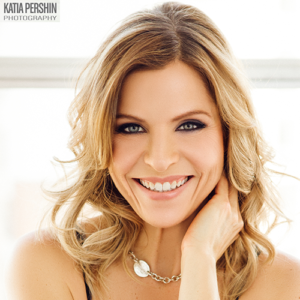As you know, I traveled back to Mexico this Christmas, and something that is found EVERYWHERE there is “Mexican vanilla”. It is sold in bottles and the purveyors promise that it is the REAL deal with artful labels that state it and ingredients lists that tout only one: pure vanilla.
Now, here in Canada, a small ingredients list like that would see me jumping for joy! But in the case of vanilla, it made me really question it. So, I came home, did some research, and, sadly, my suspicions were confirmed.
Patricia Rain, known as “The Vanilla Queen“, shares on her website that because vanilla originally came from Mexico (along with Central America and the Caribbean), and because at one time, Mexico produced the world’s finest vanilla, it follows that it would still be true. However, nearly all the so-called vanilla extract from these countries is, unfortunately, synthetic.
According to Rain, Mexico’s share of the world’s vanilla supply took a nose dive in the early 20th century when the Mexican Revolution raged through the country. During this time, Mexico, Central America and the Caribbean began selling cheap synthetic vanillas hoping to cash in on the association of Mexico and vanilla. It worked, and by adding coumarin to synthetic vanilla, the flavour was a little more like pure vanilla.
According to an article written by Robert Pierdt for ABC News, “The U.S. Food and Drug Administration warned that so-called Mexican “vanilla” is often made with a toxic substance called coumarin and shouldn’t be bought by consumers.
Coumarin is related to warfarin, which is found in some blood thinners. Eating foods with coumarin may be dangerous for people taking blood thinners, because the combination could increase their risk of bleeding.
Pure vanilla is made with the extract of beans from the vanilla plant. Mexican vanilla is frequently made with the extract of beans from the tonka tree, an entirely different plant that belongs to the pea family. Tonka bean extract contains coumarin. Since 1954, coumarin has been banned from all food products sold in the United States [or Canada].
Consumers should be cautious when buying vanilla in Mexico and other Latin American countries, the FDA advised. Look for ‘vanilla bean’ on the label’s ingredient list. Don’t buy the product if it says ‘tonka bean’ or has a vague ingredient list or no list.”
Some labels even say, “This product does not contain coumarin”, but unfortunately, food labeling is not strictly controlled or enforced in Mexico, so you can’t be sure of what’s actually lurking inside.
What To Look For.
So, how can you figure out whether or not you’re getting the real deal? There are two main ways according to The Vanilla Queen, Patricia Rain:
#1. Colour. Is it clear? Then it is synthetic vanillin and it can be bought for the same price at home. Dark and murky? Again, synthetic vanillin, most likely ethyl vanillin derived from coal tar. Is it a lovely amber? It may be real.
#2. Price. Bottom line: If it seems too good to be true, it usually is. In that same Globe and Mail article, David van der Walde , director of Aust & Hachmann Canada, a Montreal-based vanilla importing company affiliated with the oldest vanilla importers in the world, shared that, “Vanilla is a staple in any baker’s pantry, but a recent confluence of events – a “perfect storm” – has led to an unprecedented spike in prices, with the cost of the ingredient rising to almost 20 times as much as it did a few years ago. A kilo is now $700, up from $40 in 2011. It is now the second-most expensive spice in the world, after saffron. He continues, “The raw material for this wildly popular flavouring is not easily obtained. Vanilla is a high-risk, labour-intensive product; derived from orchids, each flower must be hand-pollinated, and the crops themselves are particularly susceptible to vine disease and storms before the pods are harvested by hand and cured in small batches using traditional methods.
Madagascar and its surrounding islands have always been the world’s dominant supplier of vanilla, accounting for roughly 80 per cent of the global supply of the beans. In March, 2017, Cyclone Enawo, the strongest cyclone to hit Madagascar in 13 years, tore through the island, damaging about 30 per cent of vanilla crops and reducing their expected harvest by a third.
It takes a plantation of vanilla orchids 4 to 5 years to get up and running, so there’s no quick solution.”
Caveat Emptor.
So, remember that it’s best to buy your vanilla at home so that you can be confident about what you’re getting. And, remember, you get what you pay for.
In Mexico, vanilla extract costs even more than it does in the U.S., so don’t fall for the scam whereby purveyors try to sell you $5 or $10 bottles of “pure vanilla”. You simply won’t be getting the real deal.
Remember, too, that in order to make a proper vanilla extract, other ingredients ARE required, such as purified water, sugar-cane alcohol and vanilla-bean extractives.
In order to be sure you are getting real vanilla, buy from a reputable source, for example, from the Vanilla Queen herself on her site, The Vanilla Company. She sells high quality beans, pastes and extracts (I learned a lot about vanilla on her site, too!), and there are others like this one from Gourmet Warehouse. Simply Organic also makes a high quality extract, and you can find it at your local health food store or online. They also have a non alcoholic vanilla flavouring, if you are looking for the taste of vanilla without the alcohol (but without being real vanilla, mind you) and if you’d prefer the convenience over vanilla beans.(see next).
If you are off-put by the smell and taste of alcohol, and you want to enjoy real vanilla, your best bet will be to use whole vanilla beans. They are sold in glass vials–look for dark, shiny pods rather than dull brown ones that may be dried out. Simply slice off the amount you need (you get the equivalent of about 3 teaspoons of vanilla extract in one vanilla pod), open up the pod to reveal the seeds and scrape them out into your dish.
Recipes.
Speaking of food, I wanted to share some recipes that really lend themselves to using vanilla. The subtle yet powerful flavour of vanilla means you need verrrry little to create an impact! Here are the ways I have been relishing vanilla lately…
Creamsicle Soda: Have you ever had a can of orange soda? Or had a Creamsicle frozen treat? Well, the secret ingredient besides the obvious orange is….vanilla! I basically follow my recipe for “Healthy 7Up” using my Soda Stream (you can also use store-bought sparkling water) and add in about 1/6th of a vanilla pod (scrape the seeds out into each glass before adding in the citrus). Or, use about 1/8th of a teaspoon of your high quality vanilla extract. Vanilla really “softens” the flavour of citrus and adds a beautiful and fragrant aroma and taste to your drink. Clementines are in season right now, so simply juice two of them for each glass, add your vanilla, ice and sparkling water and voila! Healthy orange soda! Garnish with a few orange slices if you like. 🙂
Vanilla Latté: I’m telling you, a little vanilla in a cup of coffee with some foamed milk is HEAVEN! Simply make a cup of coffee. Pour it into your blender with some milk (or milk replacement, I like almond or cashew milk best) and a 1/8th teaspoon vanilla extract (or 1/6th of a vanilla pod). Blend on high until frothy and re-pour into your mug. Top with a pinch of cinnamon and nutmeg if you like, and add a drizzle of local honey or maple syrup if you need the sweetness. Enjoy!
Milkshake: If you’ve been following me at all, you will know that I LOVE cold sweet treats, and this recipe is AMAZING. I am telling you, it has kept me and Roger out of ice cream shops for over 7 years! I mean, we still go once in a blue moon, but I can count on ONE hand the number of ice cream parlour trips we’ve made IN THAT TIME, and I will NEVER be able to count the number of times I’ve made this recipe! We prefer it as a milkshake to an ice cream, but we make it so thick, that it’s pretty much like soft-serve. Use some of your high quality vanilla, and it takes it to another level! I am a HUGE fan of The Detoxinista because each and every one of her recipes WORKS. I love never wasting ingredients. They are all refined-sugar and flour free, they use ingredients I can find easily and they tend to be really, really easy. Here is the recipe for the milkshake.
Baking: Here is another Detoxinista recipe for a Banana Snack Cake I recommend to all my students, as it allows us to enjoy cake without the rush and crash that comes from eating refined sugar and flour. That said, I find ALL of Megan’s (The Detoxinsta) sweet recipes TOO sweet! I tend to cut the sweetener IN HALF on the first try, (her sweeteners are all real, like honey, maple syrup or coconut sugar, generally) and adapt the recipe from there. I also tend not to add in chocolate chips to this or her other recipes that call for them as an option. I just leave them out, and the taste is still sweet and delicious. I have made this recipe about a million times, and often just omit the vanilla when I don’t have a vanilla pod handy, so you can make it even if you don’t choose to add vanilla. But I really can’t say enough about how much more delicious it is when you add it in!
The Bottom Line.
I hope you have learned a little about vanilla and why it’s become soooo pricey, especially in the past year or so. Beware of knock-offs, and avoid the temptation to buy when traveling to Mexico. This makes me sad to say because I LOVE Mexico, and I encourage you to travel there and enjoy their country! But, we need to remember that their food and labeling laws aren’t the same as ours, and that they are still a highly impoverished country. They are trying to feed their families and may go about it in less-than-ethical ways.
I hope you try some of the recipe ideas I shared, either with or without vanilla, because it is FUN to make treats instead of always buying them at convenience stores or coffee shops or ice cream parlours or bakeries. We can do so much better making our own versions of these indulgences that leave us feeling empowered and energized and happy instead of guilty and sick and drained.
I want that for me.
And I want that for you, too.
Because I want you to love your life one bite at a time.
P.S. There is STILL TIME to register for my “One Bite At A Time” (OBAAT) Group Coaching Program that started on Saturday, January 12th, 2019. Click here to learn more. If you like what you see, we will set up a phone call to ensure we are a good fit for one another and you will still be able to join us! If you want to TRULY change the way you feel about yourself and your body, then I am confident I am the coach to help you achieve your goals.
P.P.S. If you haven’t already signed up, you might enjoy my 14 Days of Wellness. Simply enter your name and email address here. It’s free, with no diets, products, challenges or catches (you’ll just start getting a Tuesday email from me and you can unsubscribe at any time). I’d love to stay connected. xo












Leave A Response